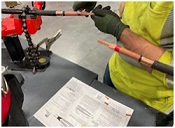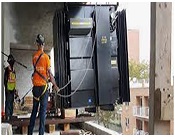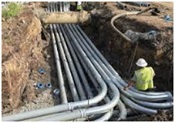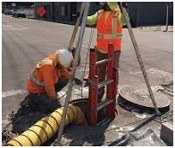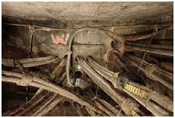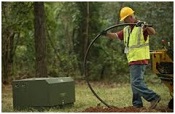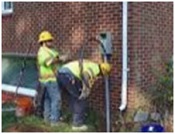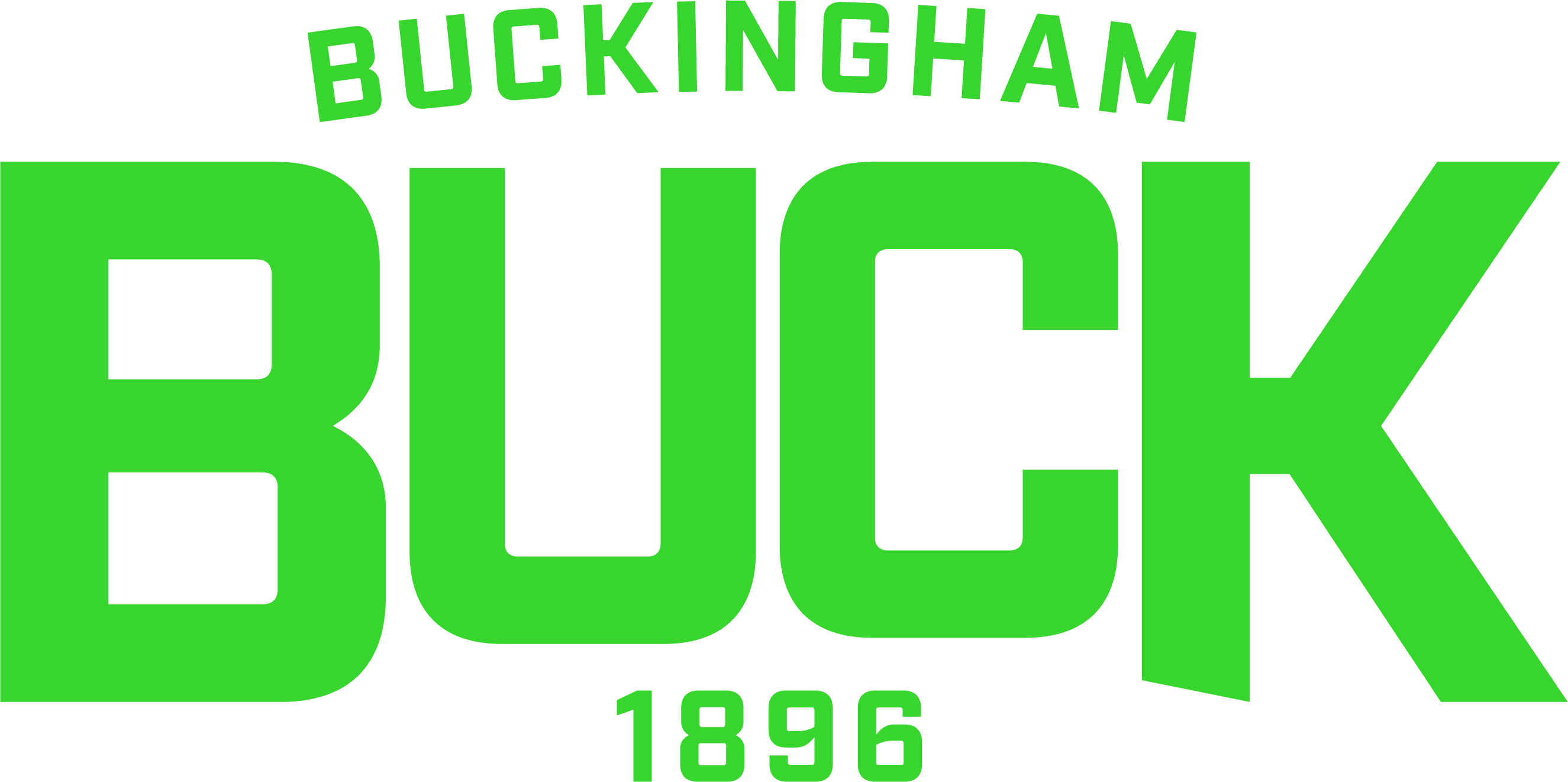What's a Cable Splicer?
Journeyman Cable Splicers build, maintain, operate, and repair underground urban electrical power network systems. Every project is complex, challenging, rewarding, and requires careful management of a skilled team of professional power workers—the construction, operation, and maintenance of network and spot-grid systems involves special skills and advanced technologies.
As an extension of the outside line series of electrical crafts, Journeyman Cable Splicers work alongside Journeymen Lineman, Journeymen Wiremen, apprentices, operators, and laborers from these and other trade classifications. Each specialized electrical worker brings unique skills and abilities to assist the Journeymen Cable Splicers to complete their tasks..
Tape splicing and terminating medium voltage cable
- Remanufacture medium voltage cable layers in the field under adverse conditions with basic hand tools
- Prepare cable ends with hands tools
- Join conductors with various methods
- Re-shield conductor with hand applied tape
- Re-insulate with hand applied tape
- Re-shield insulation with hand applied tape
- Re-shield metallic layer with soldering & lead-splicing
- Re-Jacket and secure complete splices and terminations
Install & operate urban underground electrical networks
- The purpose of a network system is to keep users energized at all times in high-density load areas, so it is uncommon for a network to be de-energized unless there is an issue.
- This holds for all grid networks and most spot
- Maintenance crews typically work on network systems with the secondary energized, driving Missouri Valley’s safety-first initiative for network systems.
Install network system transformers and network protectors
- A network protector is a special self-contained air breaker or switching unit with a full complement of current, potential, and control transformers and relay functionality similar in design and operation to a power circuit breaker at a substation.
- Cable Splicing Technicians are trained ‘Network Mechanics’ with a blended knowledge base and skill poll relative to outside underground line and substation construction.
Install manholes and duct banks
- Saw-cut concrete and asphalt surfaces
- Excavation and trenching
- Installation of large diameter conduit & fittings
- Installation of pre-formed handholes and manholes
- Construction of forms to pour concrete pads
- Compaction and protective backfill of duct banks
Confined and enclosed space entry and manhole work
- Create safe traffic control work plans
- Set-up road and lane closures
- Provide traffic control
- Enter confined and enclosed spaces
- Work in manholes to install cables and splices
- Repair and maintain vaults and spaces
- Train for confined space non-entry rescue
Install medium voltage cable in manholes and duct banks
- Pull-in secondary network conductors
- Pull-in primary network conductors
- Install spot and grid network secondary systems
- Install primary network systems
- Splice and terminate cables
- Rack and label conductors
Install underground residential distribution (URD) systems
- Trench and install direct cable and conduit
- Install cable in conduit
- Install pads and pad mounted equipment
- Install pedestals and junction elements
- Install switches and cables to riser poles
- Terminate and splice cables
Install and upgrade underground secondary services
- Trench and install direct bury conductors
- Pull cable in conduit and raceways
- Terminate cables in meter sockets and panels
- Terminate cables in transformers and pedestals
- Energize secondary services
Locate and trouble shoot underground cable faults
- Respond to outages by sectionalizing, switching, and isolating underground faults and cable failures
- Locate underground cables and faults with pin-point accuracy
- Dig-up and repair located faults
- Restore power and electrical circuits to normal status
- Perform non-destructive testing of medium voltage cables
- Operate specialized test equipment and follow maps to verify
Install, maintain, trouble-shoot, and repair network protectors
- Create and prepare complex switching procedures
- Perform complex multi-step switching routines to maintain service while isolating circuit elements
- Rack-out and perform complex diagnostic tests and adjustments to network protectors (breakers)
- Calibrate and adjust relaying circuits including assessment and replacement of CTs, PTs, relays, and instrument control circuits
- Adjust contact pressures, checking resistances, and conductivity
Install, maintain, trouble-shoot, and repair network transformers
- Remove concrete vault lid sections or roll transformers into electric rooms
- Lift or ferry large oil-filled network transformers
- Install network protector/breakers to transformer body
- Install primary and secondary cables in network vaults or rooms
- Perform specialized lead-terminations and splices
- Perform new installation commissioning and diagnostic evaluation Doble-type testing to verify internal integrity
- Perform oil sampling to complete dissolved gas analysis
- Perform routine shut-down and maintenance including oil replacement in main tank and auxiliary chambers
Install, maintain, trouble-shoot, and repair network switchgear
- Study maps, drawings, and circuits
- Inspect and assemble metal-clad and submersible switchgear
- Install cables, terminations, system monitoring, and control components.
- Install jumpers, fuses, and motor operators
Install, terminate, and splice underground transmission cables
- Prepare and pull high voltage transmission cables into ducts with specialized equipment
- Terminate and splice high voltage transmission cables using specialized tools and techniques
- Operate and troubles shoot systems

